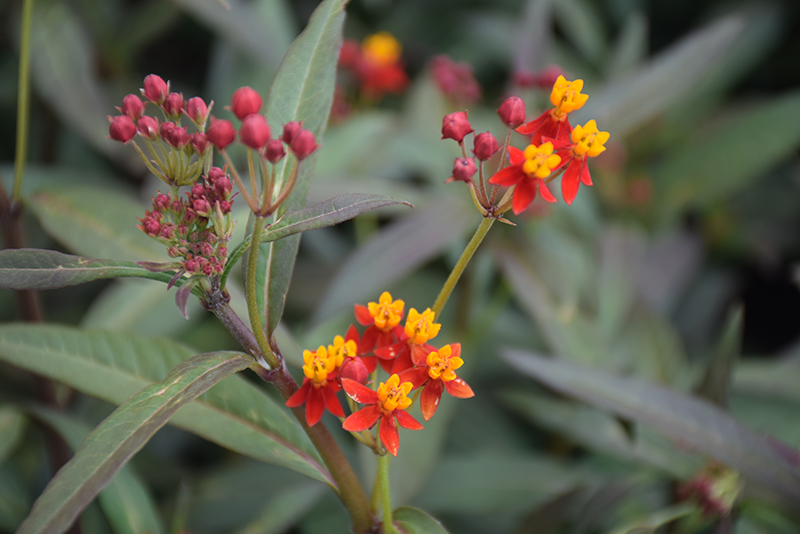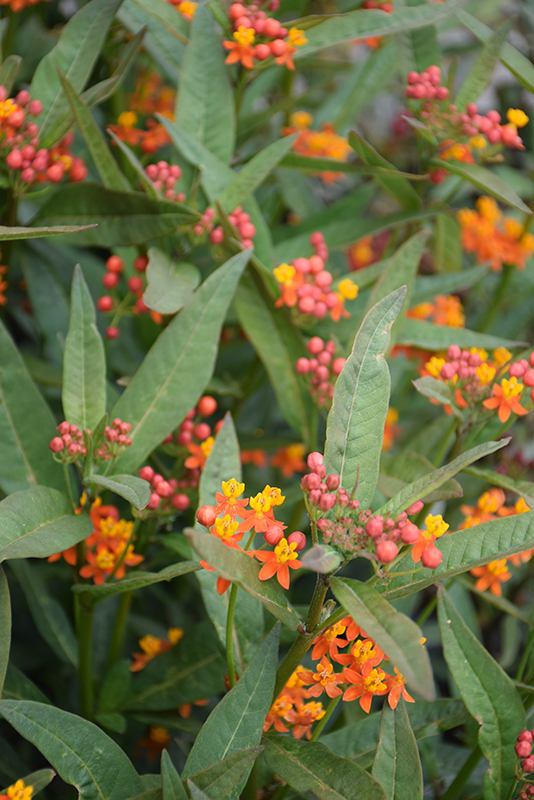Height: 3 feet
Spacing: 12 inches
Sunlight:
![]()
![]()
Hardiness Zone: 8a
Other Names: Mexican Butterfly Weed
Description:
The perfect plant for attracting Monarch butterflies and hummingbirds; unusual and showy bicolored flowers with bright yellow centers and recurved red to orange petals; adapts well to most soil types; readily re-seeds; roots are hardier
Ornamental Features
Tropical Milkweed features unusual scarlet flat-top recurved flowers with yellow eyes at the ends of the stems from early summer to late fall, which emerge from distinctive brick red flower buds. The flowers are excellent for cutting. Its narrow leaves emerge burgundy in spring, turning green in color with curious grayish green undersides the rest of the year.
Landscape Attributes
Tropical Milkweed is an herbaceous evergreen perennial with an upright spreading habit of growth. Its medium texture blends into the garden, but can always be balanced by a couple of finer or coarser plants for an effective composition.
This is a relatively low maintenance plant, and is best cleaned up in early spring before it resumes active growth for the season. It is a good choice for attracting butterflies and hummingbirds to your yard, but is not particularly attractive to deer who tend to leave it alone in favor of tastier treats. Gardeners should be aware of the following characteristic(s) that may warrant special consideration;
- Self-Seeding
Tropical Milkweed is recommended for the following landscape applications;
- Mass Planting
- General Garden Use
- Naturalizing And Woodland Gardens
Planting & Growing
Tropical Milkweed will grow to be about 3 feet tall at maturity, with a spread of 24 inches. When grown in masses or used as a bedding plant, individual plants should be spaced approximately 12 inches apart. It tends to be leggy, with a typical clearance of 1 foot from the ground, and should be underplanted with lower-growing perennials. It grows at a medium rate, and under ideal conditions can be expected to live for approximately 10 years. As an evegreen perennial, this plant will typically keep its form and foliage year-round.
This plant does best in full sun to partial shade. It is very adaptable to both dry and moist locations, and should do just fine under typical garden conditions. It may require supplemental watering during periods of drought or extended heat. This plant does not require much in the way of fertilizing once established. It is not particular as to soil type or pH. It is somewhat tolerant of urban pollution. This species is not originally from North America, and parts of it are known to be toxic to humans and animals, so care should be exercised in planting it around children and pets.


